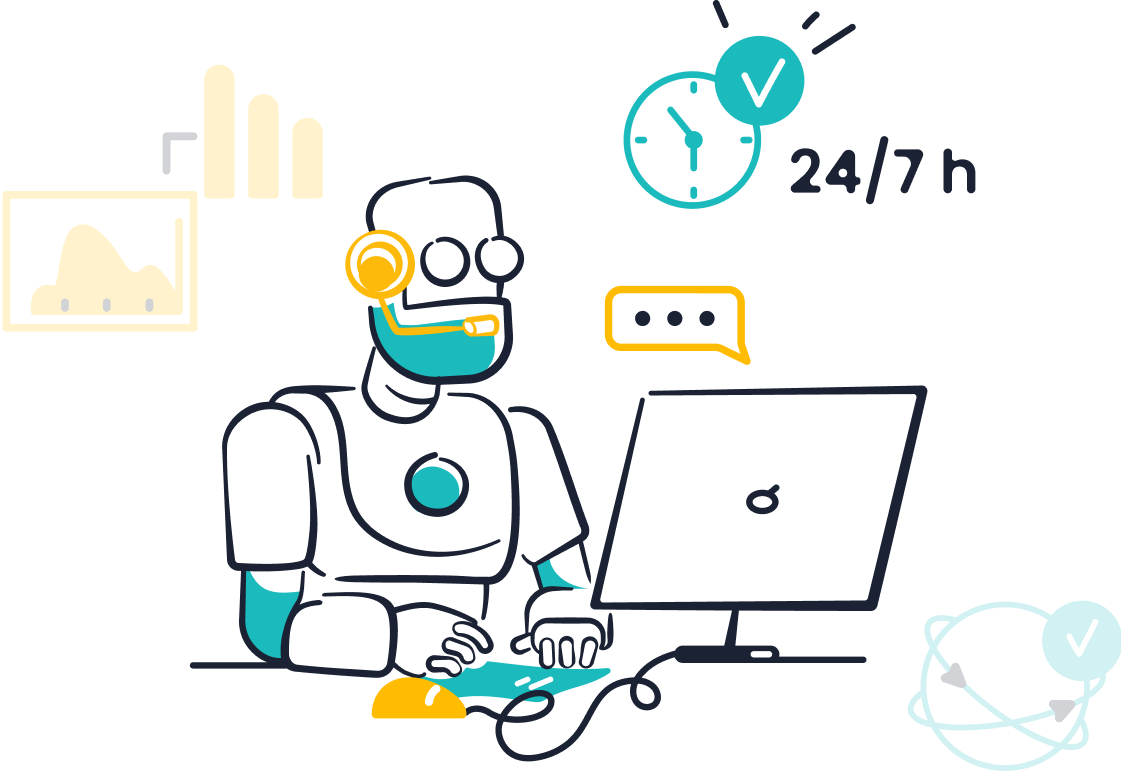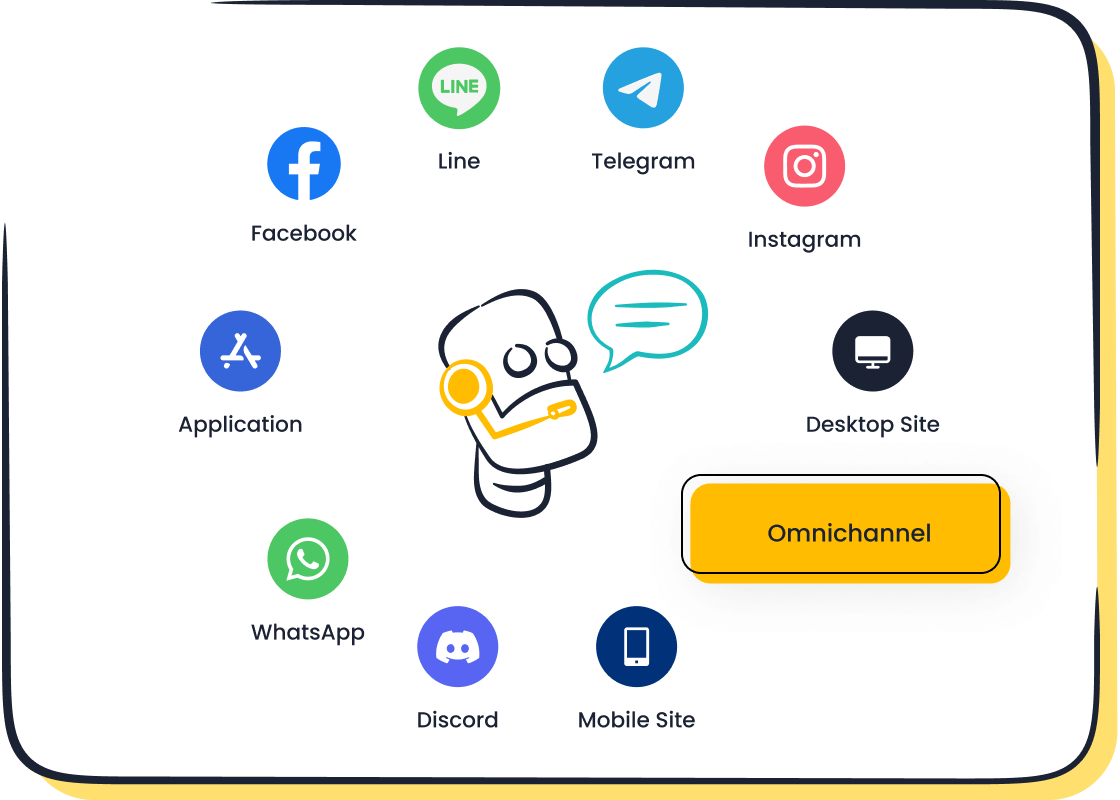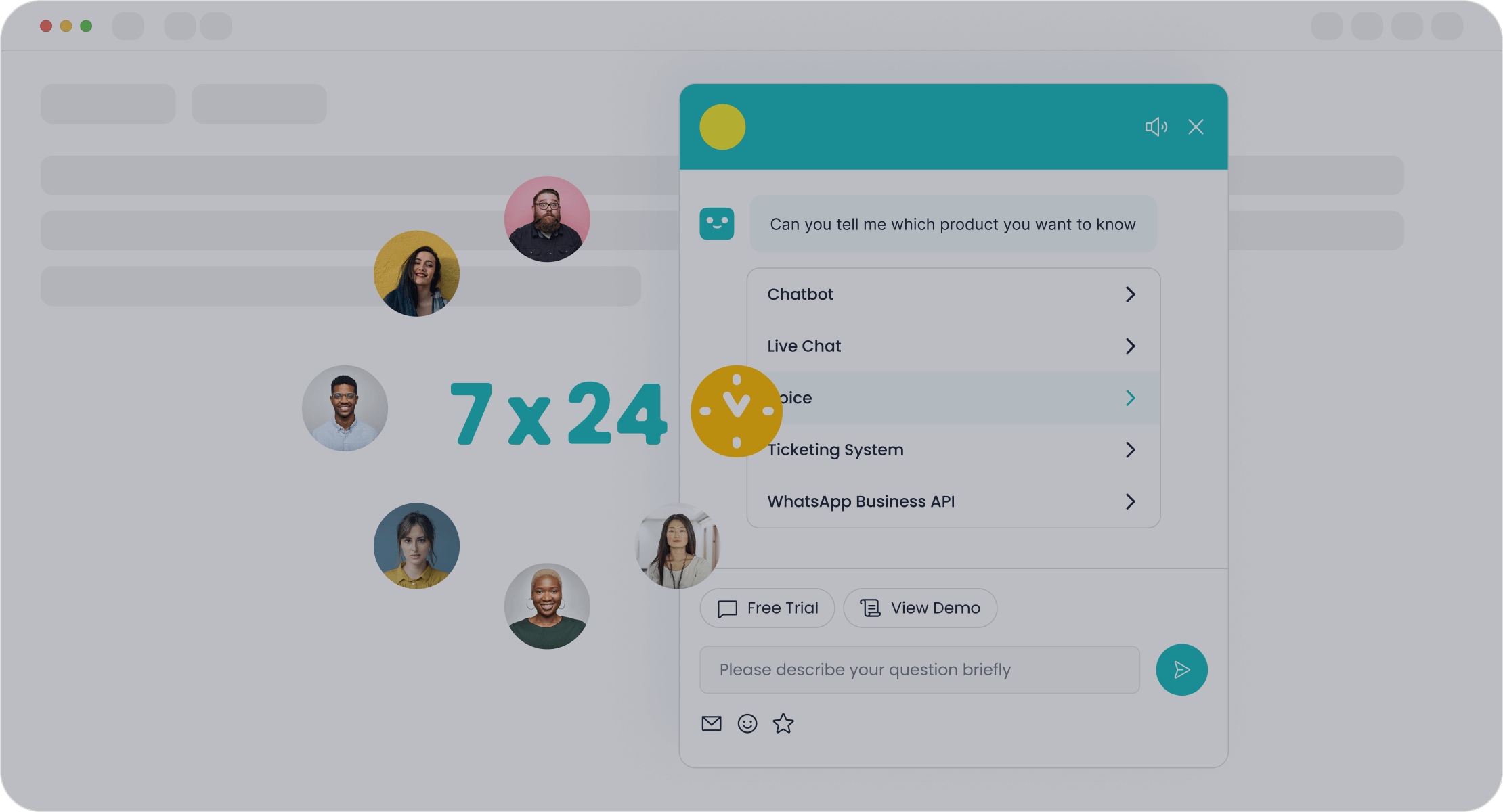Customer Service Automation Examples Every Business Needs

Businesses seeking to elevate customer experience in 2025 can look to proven customer service automation examples for inspiration. The market for customer service automation continues to surge, with AI expected to power 95% of customer interactions by 2025 and companies reporting up to 20% higher customer satisfaction. Automation supports efficiency and scalability, as shown by leading brands like Sobot and OPPO. With strategies such as Sobot AI, organizations achieve real-time insights, personalized service, and measurable gains in customer satisfaction. Companies using these strategies see faster growth and stronger customer relationships.
- The AI customer service market is projected to reach nearly $3 billion by 2032.
- 73% of shoppers believe AI can enhance customer experience.
- Automated workflows help businesses respond to urgent issues and scale globally.
Customer Service Automation Overview
What Is Customer Service Automation?
Customer service automation uses technology to handle routine support tasks with little or no human help. Businesses rely on tools like AI, chatbots, and self-service portals to answer questions, route tickets, and provide support at any time. This approach helps companies deliver fast and reliable service while reducing costs.
- Customer service automation uses AI and machine learning to manage common customer requests.
- It allows companies to offer 24/7 support and solve problems quickly.
- Many customers prefer to find answers themselves. In fact, 81% of users try to solve issues on their own before reaching out to an agent.
- About 90% of consumers expect businesses to provide digital self-service options.
- One-third of people avoid talking to customer service representatives if possible.
- Automation tools help agents by taking care of repetitive tasks, so agents can focus on more complex problems.
- These systems can create tickets, answer FAQs, and guide customers through challenges, improving the overall experience.
Sobot, for example, offers AI-powered chatbots and omnichannel solutions that automate customer service across multiple platforms, helping businesses meet these growing expectations.
Why It Matters in 2025
Customer service automation will play a key role in business success in 2025. As digital transformation continues, many companies still face challenges in automating customer service processes. The AIIM 2024 Insights & 2025 Outlook report shows that over 45% of business processes remain paper-based, which slows down progress. Companies need automation to manage information and scale their operations.
Forrester predicts that the best results in 2025 will come from combining new AI tools with proven automation methods. This balance helps businesses deliver reliable and innovative customer service. Industry reports, such as the MarketsandMarkets analysis, highlight the rise of omni-channel self-service and AI integration as major drivers for automation growth. Companies like Sobot lead the way by providing all-in-one solutions that help businesses automate customer service, improve efficiency, and deliver better customer experiences. These strategies will shape the future of customer service and help brands stay ahead in a competitive market.
Key Benefits of Automation
Efficiency and Cost Savings
Customer service automation drives efficiency by streamlining repetitive tasks and reducing manual workloads. Companies across industries have improved financial performance by refining cost structures and optimizing operations. For example, a HubSpot survey found that 90% of customers value immediate responses, which automation delivers by handling inquiries instantly. Automated ticketing systems can boost efficiency by up to 30%, according to recent research. Businesses such as e-commerce retailers and telecom companies have used automation to cut operational costs while maintaining high-quality service. Sobot’s AI-powered solutions help organizations automate customer service processes, allowing teams to focus on complex issues and deliver exceptional customer experiences.
- Automation reduces labor costs and increases productivity.
- Companies identify inefficiencies and optimize resources through automated workflows.
- Sobot’s chatbot and omnichannel tools support scaling customer support without increasing expenses.
24/7 Support and Consistency
Automation enables businesses to provide consistent, round-the-clock support. Customers expect rapid responses at any hour, making 24/7 service a key part of modern customer service strategies. The following table highlights important metrics for maintaining service quality:
| Metric Name | Description | Importance for 24/7 Support and Consistency |
|---|---|---|
| First Response Time | Speed of initial reply to inquiries | Builds trust and satisfaction |
| Resolution Rate | Issues resolved on first try | Reduces repeat contacts and costs |
| First Contact Resolution | Problems solved in the first interaction | Drives loyalty and reduces delays |
| Average Resolution Time | Time taken to resolve a ticket | Shorter times increase satisfaction |
| Cost per Conversation | Cost per issue handled | Ensures cost-effective, scalable customer service |
| Average Conversion Rate | Visitors completing desired actions | 24/7 support boosts conversions |
Sobot’s AI-driven helpdesk and chatbots automate ticket routing and notifications, ensuring customers receive consistent, personalized support at all times.
Scalability and Personalization
Automation supports scaling customer support as businesses grow. Companies can handle more interactions without sacrificing quality. Research shows that algorithmic personalization reduces information overload and improves decision-making. Personalized support, powered by sentiment analysis, enables businesses to personalise customer experience and deliver tailored solutions. For example, computer-tailored interventions in healthcare have proven more effective than traditional methods. Sobot’s omnichannel platform consolidates customer data, enabling scalable customer service and personalized interactions across channels. This approach enhances customer engagement strategy and supports exceptional customer experiences, even as demand increases.
Automation empowers organizations to deliver scalable customer service, enhancing customer satisfaction and building loyalty through personalized interactions and exceptional customer experiences.
Customer Service Automation Examples

AI-Powered Chatbots and Virtual Assistants

AI-powered chatbots and virtual assistants have become essential in transforming customer interactions. These tools provide instant answers, resolve routine questions, and escalate complex issues to human agents. Sobot’s AI chatbot stands out with its omnichannel, multilingual, and no-code features, allowing businesses to deploy automated customer service across platforms like WhatsApp, SMS, and web chat. The chatbot operates 24/7, handling thousands of queries per second and reducing operational costs by up to 50%. Companies like OPPO have achieved an 83% chatbot resolution rate and a 94% positive feedback rate after implementing Sobot’s solution. Industry data shows that AI-powered customer support can improve customer satisfaction by 33% and increase conversion rates by up to 40%. These chatbots also support scalability, enabling businesses to serve more customers without increasing staff.
Automated Ticketing and Routing
Automated ticketing and routing streamline support operations by assigning inquiries to the right agents based on topic, urgency, or customer profile. Sobot’s help desk automation system uses AI to prioritize and route tickets, ensuring faster response times and higher first contact resolution rates. Metrics such as first response time, average resolution time, and SLA compliance improve significantly with automation. For example, automated systems can reduce ticket backlog and escalation rates, leading to better agent utilization and higher customer satisfaction scores. Companies using automated customer service see a reduction in reopened tickets and improved workload management, which supports both efficiency and quality.
Self-Service Portals
Self-service portals empower customers to find answers independently, reducing the need for direct agent support. Sobot’s self-service options include knowledge bases, FAQs, and AI-driven guides that help users resolve issues quickly. According to Microsoft’s State of Global Customer Service Report, 66% of customers try self-service before contacting support, and 88% expect companies to offer these portals. Effective self-service leads to higher case deflection rates and lower cost per resolution. Businesses benefit from increased customer autonomy, faster problem-solving, and improved customer experience. Integrating self-service into an omnichannel customer service strategy ensures consistent support across all touchpoints.
Proactive Messaging
Proactive messaging uses automation to reach out to customers before they encounter problems. Sobot’s platform enables businesses to send personalized notifications, reminders, and product recommendations through preferred channels. This approach increases engagement, boosts conversion rates, and enhances customer retention. Studies show that 73% of customers expect personalized communication, and 76% consider it a key factor in brand loyalty. Automated customer service tools deliver timely, relevant messages, improving customer experience and reducing operational costs. Proactive messaging also helps businesses identify and address issues early, leading to higher satisfaction and loyalty.
Sentiment Analysis
Sentiment analysis leverages AI to interpret customer emotions from interactions, providing valuable insights for service improvement. Sobot’s AI-powered automation includes sentiment analysis tools that monitor feedback across channels, identify trends, and highlight areas for enhancement. This technology enables organizations to understand not just what customers say, but how they feel, supporting continuous quality improvement. By analyzing sentiment data, companies can tailor training, redesign processes, and create targeted support materials. The result is a more personalized customer experience, reduced churn, and higher customer satisfaction. Sentiment analysis transforms raw feedback into actionable strategies for better service.
Customer service automation examples like Sobot’s chatbot, omnichannel solutions, and AI-driven analytics help businesses improve efficiency, reduce costs, and boost customer satisfaction. These tools enable organizations to scale support, personalize interactions, and deliver exceptional customer experiences in every industry.
Chatbots for Customer Service: The Sobot Advantage

Sobot Chatbot Features
Sobot delivers a powerful solution for businesses seeking advanced automation in customer service. The platform integrates all communication channels—such as e-commerce sites, social media, apps, email, and SMS—into a single workspace. This approach eliminates the need for multiple systems and streamlines operations. Sobot’s Five-AI system, launched in 2024, brings together omnichannel AI, scenario-based AI for retail, multi-faceted AI agents, and generative AI powered by leading large language models. The system also prioritizes data privacy and compliance.
Sobot stands out by offering:
- Omnichannel support for seamless customer journeys.
- AI-driven customer support that handles complex inquiries instantly.
- Personalized support at scale, using predictive automation to anticipate customer needs.
- Over 300 statistical reports and thousands of indicators for deep insights.
- No-code workflow automation, making setup easy for any team.
- Competitive pricing with no hidden fees.
Sobot’s chatbots for customer service adapt to multiple industries, including retail, finance, gaming, and education. The platform enables proactive marketing automation, helping businesses engage customers before issues arise and driving higher conversion rates.
Real-World Impact
Sobot’s ai-powered customer support delivers measurable results across industries. Companies experience faster response times and improved efficiency. For example, Sobot’s AI tools reduce resolution times by up to 50% and improve first response times by 37%. Operational costs drop significantly, with up to 68% fewer staff needed during peak seasons due to automation.
OPPO, a global smart device leader, partnered with Sobot to transform its customer service. After implementing Sobot’s chatbots and automation, OPPO achieved:
- 83% chatbot resolution rate
- 94% positive customer feedback
- 57% increase in repeat purchases
Other businesses report similar gains. Around 80% of customers interacting with ai-powered customer support report positive experiences. Repeat purchases rise by 36% with automation, and ai-driven customer support enables seamless, personalized interactions across all channels. Sobot’s platform empowers organizations to scale support, deliver personalized support, and maintain high satisfaction as they grow.
Omnichannel Automation with Sobot
Unified Customer Experience
Sobot’s omnichannel automation platform creates a unified customer experience by connecting every touchpoint into a single, seamless journey. Customers today expect consistent service, no matter where they interact. Research shows that 91% of customers want the same experience across all channels, but only 36% of businesses deliver this level of consistency (source). Sobot bridges this gap by integrating website, app, social media, and messaging channels into one workspace. This approach ensures that agents have a complete view of each customer’s history and preferences.
- 80% of customers use multiple channels to interact with companies.
- Only 12% of businesses provide smooth handoffs between channels.
- Companies using omnichannel strategies see a 91% higher increase in customer retention.
OPPO, a global smart device leader, saw a 57% increase in repurchase rate and an 83% chatbot resolution rate after adopting Sobot’s omnichannel automation. Sobot’s solution unified OPPO’s customer data and channels, making it easier to deliver fast, accurate support and personalise customer experience at scale.
Integration and Analytics
Sobot’s automation platform offers deep integration and advanced analytics to optimize every step of the customer journey. The system connects with CRM, e-commerce, and marketing tools, breaking down data silos and enabling real-time insights. This integration supports omnichannel customer service by allowing agents to access all relevant information instantly.
| Evidence Type | Description | Role in Supporting Unified Customer Experience |
|---|---|---|
| Session Activity | Tracks time spent on pages or app sections. | Identifies engagement trends and user issues, helping refine automation strategies. |
| Conversion Rate | Measures users completing desired actions. | Shows how well automation supports business goals and customer experience. |
| Behavioral Analytics | Analyzes user actions across digital assets. | Refines touchpoints and validates improvements in omnichannel customer service. |
| Customer Engagement Platforms | Consolidate data and engagement across teams. | Enable personalized, consistent experiences through unified automation. |
Sobot’s analytics tools help businesses identify friction points, capture actionable insights, and implement changes that improve customer experience. Generative AI, as used by Sobot, is projected to handle up to 70% of customer interactions by 2025, boosting satisfaction by 30%. Companies that use unified analytics and automation can respond faster, deliver more relevant support, and build lasting loyalty.
Getting Started with Automation
Assessing Your Needs
Every business must begin its customer service automation journey by understanding its unique requirements. Teams often use questionnaires, surveys, and focus groups to gather information about current workflows and customer pain points. Project management tools help organize findings, while business process management systems analyze and improve workflows. Companies like Sobot recommend regular needs assessments to keep up with changing demands. By identifying gaps and setting clear goals, organizations can align their customer engagement strategy with real business outcomes.
Tip: Design surveys with clear instructions and test them on a small group before rolling them out to the entire team. This approach ensures clarity and relevance.
Choosing the Right Tools
Selecting the right automation tools is critical for scaling customer support. Teams should start by defining project requirements and understanding the skills of their staff. Budget, ease of use, and integration capabilities all play a role. Tools must support collaboration, offer strong reporting features, and provide 24/7 support. Sobot’s platform, for example, offers no-code workflow automation, omnichannel support, and seamless integration with existing systems. Third-party reviews and user testimonials can help teams compare features and make informed decisions.
Key considerations for tool selection:
- Project requirements and team skills
- Cost and licensing
- Integration with current systems
- Scalability and support
- Reporting and analytics
Implementation Steps
A structured approach ensures successful customer service automation. Teams should follow these steps:
- Analyze current processes and set clear goals.
- Map workflows, removing redundant tasks.
- Define automation actions that balance efficiency and cost.
- Implement the solution, addressing technical and cultural factors.
- Monitor the live system and review progress.
Frameworks like the Active Implementation Framework guide teams through exploration, installation, and full implementation. Planning tools and empathy interviews help teams understand context and track progress. Sobot provides training and ongoing support to help businesses adopt automated customer service strategies smoothly.
Measuring Success
Measuring the impact of automation is essential for continuous improvement. Companies track key metrics such as process cycle time reduction, cost savings, error rate reduction, and employee productivity. Interactive dashboards provide real-time insights and predictive analytics, helping teams align with business goals. For example, Deloitte found that shipment processing time dropped from 48 hours to 30 minutes after automation (source). Sobot’s analytics tools help businesses monitor customer engagement strategy performance and optimize scaling customer support.
| Success Metric | Why It Matters | How to Measure |
|---|---|---|
| Process Cycle Time Reduction | Faster workflows | Compare pre- and post-automation |
| Cost Savings & ROI | Lower labor costs and errors | Calculate savings and ROI |
| Error Rate Reduction | Fewer mistakes | Track error rates |
| Employee Productivity | More time for strategic work | Survey employees, track time saved |
| Scalability & Adoption Rates | Widespread use and growth | Monitor automated processes |
Note: Regularly review and update metrics to ensure customer service automation continues to deliver value and supports enhancing customer engagement.
Adopting customer service automation transforms business operations and drives exceptional customer experiences. Companies using Sobot’s solutions see faster response times, higher customer satisfaction, and rapid ROI. Surveys show over 90% of employees report increased productivity and improved collaboration with automation. Sobot’s platform helps teams deliver exceptional experiences and focus on enhancing customer satisfaction. Businesses achieve a 74% reduction in response time and a 24% increase in customer satisfaction, as shown below:

Sobot empowers organizations to create exceptional customer experiences and scale with confidence. To learn more about Sobot’s automation tools, visit Sobot’s official website or contact their team for a personalized demo.
FAQ
What is customer service automation?
Customer service automation uses technology to handle routine support tasks. Companies use tools like chatbots, automated ticketing, and self-service portals. Sobot provides customer service automation examples that help businesses save time, reduce costs, and improve customer satisfaction.
How does Sobot’s chatbot improve customer service?
Sobot’s AI-powered chatbot answers common questions instantly. It supports multiple languages and works 24/7. Businesses using Sobot’s customer service automation examples report up to 83% resolution rates and a 94% positive feedback rate, as seen with OPPO.
Can customer service automation work across different channels?
Yes. Sobot’s omnichannel solution connects email, chat, social media, and phone into one platform. This customer service automation example ensures customers receive consistent support, no matter which channel they use.
What are the main benefits of customer service automation?
Customer service automation examples show faster response times, lower costs, and higher customer satisfaction. Sobot’s solutions help companies scale support, personalize interactions, and boost efficiency by up to 70%.
How can a business get started with Sobot’s automation tools?
Businesses can visit Sobot’s official website to explore customer service automation examples. Sobot offers demos, training, and support to help teams implement automation quickly and effectively.
Tip: Start with one customer service automation example, such as a chatbot, then expand to omnichannel support for the best results.
See Also
Ways AI Customer Support Tools Enhance Operational Efficiency
Understanding The Efficiency Behind Call Center Automation Systems
Key Features That Define The Best CRM Call Center Software
The Ten Leading Customer Service Software Solutions For 2024
Comprehensive Guide To Using Omnichannel Software In Call Centers
